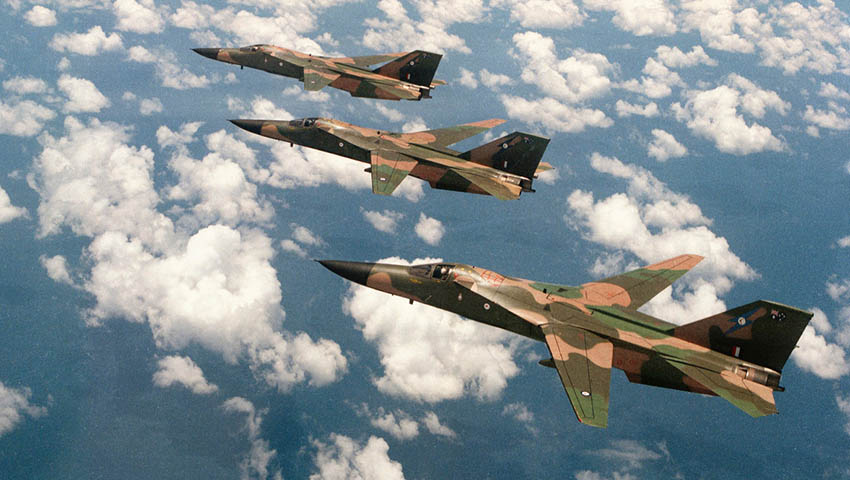Power projection provides policy makers with a unique tool set for engaging in sensitive regional and global affairs. As a middle power in a rapidly evolving region, Australia’s introduction of key platforms requires a nuanced understanding and strategy to maximise the effectiveness of land, air, sea, cyber and multi-domain capabilities in Indo-Pacific Asia.
Power projection has historically been the domain of superpowers and their smaller, yet equally important great power counterparts, however the rapidly shifting global security paradigm driven by the economic, political and strategic rise of nations like China and India, combined with the emergence and in some cases reemergence of nations including Russia, Japan, Germany and Brazil, are serving to reshape the power projection dynamic.
In a traditional sense, the US Department of Defense defines power projection as the capacity of a state "to apply all or some of its elements of national power – political, economic, informational, or military – to rapidly and effectively deploy and sustain forces in and from multiple dispersed locations to respond to crises, to contribute to deterrence, and to enhance regional stability".
Australia's position in the international community as a 'middle power' committed to the maintenance of the post-Second World War geo-political, economic and strategic order places the nation in a precarious position as the strategic power projection capabilities of its primary security partner, the US, is challenged by the competing interests and near-peer capabilities of China.
In particular, China's growing qualitative and quantitative power projection capabilities, supported by an intricate network of anti-access/area denial (A2/AD) capabilities are serving to counter-balance the traditional elements of US global force projection that Australia has become dependent upon, namely rapidly deployable ground forces, long-range strategic bombers, nuclear powered aircraft carriers and their supporting strike groups, and the US strategic nuclear arsenal.
Carrot and stick diplomacy
Coercion serves as the key objective of traditional 'hard power' implementation. US international relations academic and political scientist Joseph Nye jnr describes this as "the ability to use the carrots and sticks of economic and military might to make others follow your will".
While economic measures, namely sanctions, form a pivotal component in implementing 'hard power', the threat and in some cases use of direct military intervention through the use of power projection platforms and doctrines serve as the core component in both power projection and 'hard power' doctrines.
In contrast, Nye explains a nation's 'soft power', or the carrot component of the equation, as being generated by "its culture (in places where it is attractive to others), its political values (when it lives up to them at home and abroad) and its foreign policies (when others see them as legitimate and having moral authority)".
While both 'hard' and 'soft' power serve as the basis for an integrated and nuanced approach to contemporary international geo-political and strategic relations, power projection, particularly in an increasingly contested Indo-Pacific region, requires traditional power projection capabilities combined with the introduction of next-generation technologies across land, air, sea and multi-domain environments.
As a nation, Australia has historically leveraged both platforms and capabilities that enabled the nation to adopt doctrines of power projection, ranging from the aircraft carriers HMA Ships Sydney and Melbourne during the Cold War and the introduction of long-range aerial strike platforms including the Canberra and F-111 strike bombers, to the more recent acquisition of the Canberra Class amphibious warfare ships.
However, domestic public opinion and political concerns following the Vietnam conflict limited the nation's development of supporting capability and doctrine. These practical realities have up until now limited Australia's ability to independently act in defence of its national interests, particularly in south-east Asia, the western Pacific and Indian Ocean, however, the rapidly evolving strategic reality requires a new understanding of power projection and the capabilities that enable such doctrines.
Breaking down the components
A diverse range of land, sea, air, cyber and increasingly space capabilities knitted together as part of a multi-domain 'system-of-systems' form the basis of a nation's 'hard power' and power projection, that is the use of military and/or economic means to influence the behaviour and intentions of a competitor and reflect an important component of modern international geo-political and strategic relations.
To effectively respond to these growing strategic challenges and continue supporting the US, Australia needs to understand the nature of power projection, the role it plays in supporting national security, particularly for middle powers like Australia and the individual capabilities that form an integrated, multi-domain focused power projection force.
This serves as an introduction to a multi-part analysis series. Part two will take a closer look at power projection focused land forces drawing on international examples including the US Marine Air Ground Task Forces (MAGTF) and US Army Brigade Combat Teams (BCT) and the recently unveiled British Army's quick reaction force based on the restructuring of a modified 16 Air Assault Brigade as outlined in Army 2020.
Part Three will review and analyse power projection oriented maritime forces, namely force structures and platforms that enhance sea control, long-range strike and amphibious force projection capabilities, drawing on examples including the expeditionary strike groups of the US Navy and surface action group models, supported by submarine deterrence groups.
The fourth part of the series will take a close look at the development and introduction of strategic air forces, with a focus on next-generation long range strike and traditional kinetic and non-kinetic strike capabilities to leverage technological advantages.


